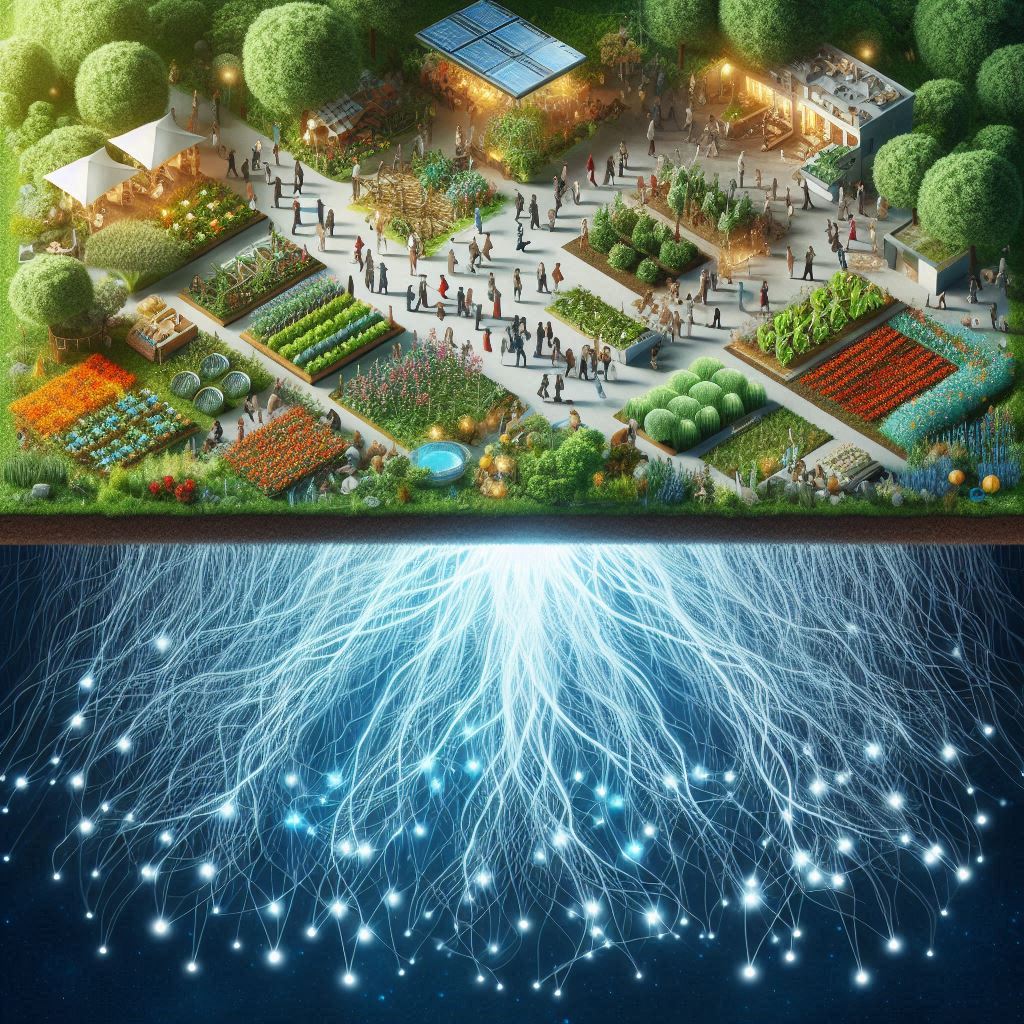
When Centralized Control Fails
The regional manager stared at his screen in disbelief. Three trucks down in Colorado. Five more awaiting parts in Arizona. And now, their distribution center’s lease expiring with no relocation plan.
“What do you mean ‘we lost track of the lease timing’?” he demanded. “That’s handled at headquarters!”
“Corporate says you should have flagged it months ago,” came the reply.
“How could I flag something I didn’t know about? We’re not even copied on those communications!”
This scenario plays out daily across industries. Centralized systems designed for stable, predictable environments are crumbling under accelerating change. As climate disruptions intensify, labor markets shift, and supply chains fracture, the limitations of top-down control become increasingly costly.
Lessons from Unlikely Places
I discovered this reality as an Army supply sergeant at Fort Bragg. The military supply system represents perhaps the ultimate top-down hierarchy – there’s literally a regulation for everything. Yet when parts were needed for mission-critical equipment, waiting for official channels meant unacceptable delays.
Success required building unofficial networks across units. While headquarters tracked requisitions through rigid systems, the real work happened through relationships with armorers in other battalions. We created informal exchanges that got parts where they were needed when they were needed – all while maintaining the paperwork that satisfied central command.
This adaptation earned me an Army Achievement Medal. The irony wasn’t lost on me: I was recognized by the top-down system for effectively working around its limitations.
I observed the same patterns later in nightclub management and now see it in food security systems nationwide. Traditional food banks designed as centralized hubs cannot adapt quickly enough to volatile conditions, while more distributed networks consistently demonstrate greater resilience.
These aren’t isolated examples – they reflect a fundamental mismatch between our organizational structures and the complex, dynamic systems they operate within.
From Sustainability to Evolutionary Fitness
As accelerating change renders traditional sustainability frameworks obsolete, organizations face a choice: evolve or falter. This evolutionary imperative demands three critical shifts:
- Redesigning governance for bioregional resilience – Moving from centralized control to distributed, place-based decision frameworks
- Rewiring incentives beyond ESG compliance – Shifting from checkbox approaches to measurable system enhancement
- Reallocating capital toward regenerative outcomes – Embedding living systems logic into organizational DNA
This isn’t just theoretical – forward-thinking companies are already demonstrating the competitive advantages of bioregional alignment.
A Framework for Evolution
Phase 1: Assessment & Alignment – Seeing Place Anew
A mid-sized food manufacturer viewed their five production facilities as interchangeable nodes in a national network. Their transformation began by seeing these facilities as participants in distinct living systems.
A bioregional assessment revealed unexpected connections: Their Idaho facility sat in a watershed facing severe drought projections, threatening both water access and the potato crops they processed – yet the facility produced excess water that literally went down the drain. Their Minnesota operation generated organic waste shipped to distant landfills while surrounded by farms struggling with soil degradation.
These weren’t separate “sustainability issues” but interconnected vulnerabilities emerging from disconnection from regional realities. More importantly, they represented strategic opportunities invisible to conventional metrics.
Phase 2: Governance Exploration – Rewiring Decision Systems
The company established “Bioregional Advisory Councils” at each facility, including employees, local farmers, community leaders, and ecological experts. These councils received authority to implement innovations within defined parameters.
The results were striking. In Idaho, they partnered with nearby breweries to capture and purify wastewater, addressing facility needs while reducing community strain on the watershed. In Minnesota, they developed a composting operation that processed organic waste into soil amendments for local farmers, who then prioritized the company for their highest-quality produce.
None of these solutions had emerged through traditional corporate channels because conventional governance structures aren’t designed to see or respond to bioregional patterns.
Phase 3: Strategic Deployment – Becoming a Regenerative Presence
With governance innovations proving successful, the company moved from reducing harm to becoming a regenerative force in each region. They developed tailored strategies that realigned core business functions:
In Idaho, watershed restoration projects enhanced regional water security—directly addressing their most critical operational vulnerability. By redesigning processes and contributing to aquifer recharge, they simultaneously secured their water access and strengthened the regional watershed.
In Minnesota, they scaled their composting into a regional soil health initiative, creating a new revenue stream while building fertility in the farmland they depended upon. By closing nutrient cycles between their facility and local farms, they reduced costs, developed preferred supplier relationships, and enhanced regional resilience.
These weren’t philanthropic initiatives but strategic realignments that positioned the company as an integral, regenerative participant in each regional system.
The Business Case for Bioregional Thinking
This approach offers substantial competitive advantages that extend beyond conventional ESG frameworks:
1. Risk Mitigation
- Enhanced supply chain resilience through bioregional diversity
- Reduced exposure to resource scarcity and climate volatility
- Protected social license through genuine community relationship
2. Market Differentiation
- Authentic positioning beyond greenwashing
- Access to emerging regenerative markets
- Heightened ability to attract and retain purpose-driven talent
3. Long-term Value Creation
- Business models aligned with emerging economic realities
- First-mover advantage in bioregional market development
- Legacy that transcends quarterly performance
The Path Forward
For executives navigating increasingly volatile conditions, bioregional thinking offers a strategic path forward that enhances resilience while creating competitive advantage. The approach doesn’t replace core business functions—it realigns them with the living systems where they operate.
Organizations that make this shift don’t just survive disruption—they help shape what emerges from it. As centralized, extraction-based models increasingly struggle with climate volatility and system complexity, bioregionally-aligned businesses will demonstrate that adaptation isn’t just possible; it’s immensely profitable.
The most courageous conversation in today’s boardrooms isn’t about sustainability targets or ESG metrics. It’s about fundamental realignment: How will your organization participate in building the regenerative future that’s already emerging?
Shannon Dobbs is a regenerative systems designer focusing on bioregional capacity building and institutional transformation. His background spans military logistics, business operations, and food systems innovation.

